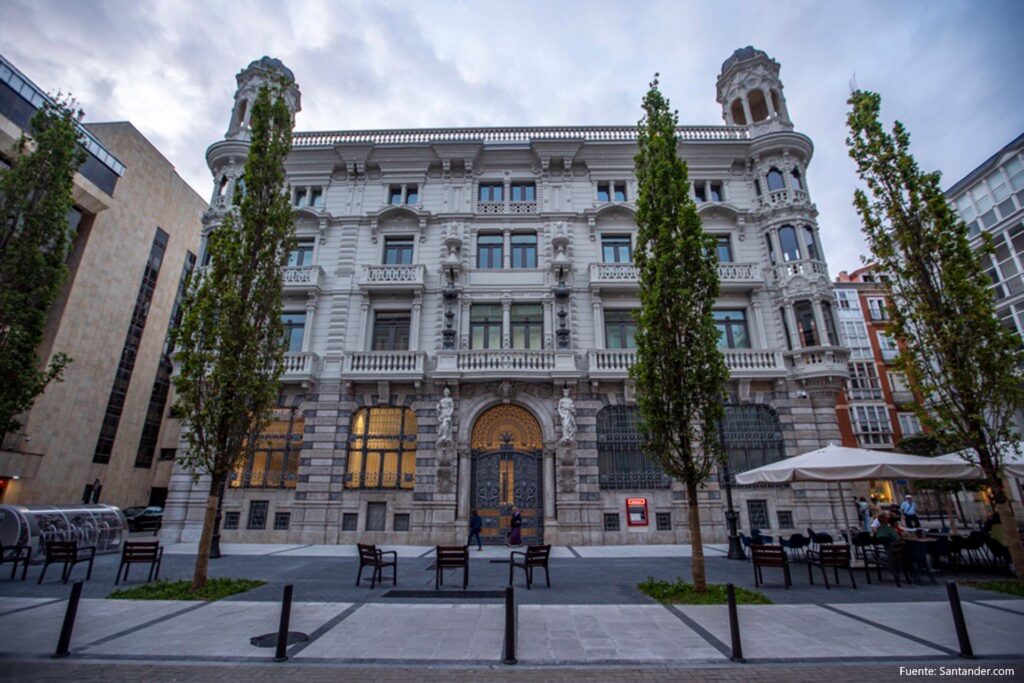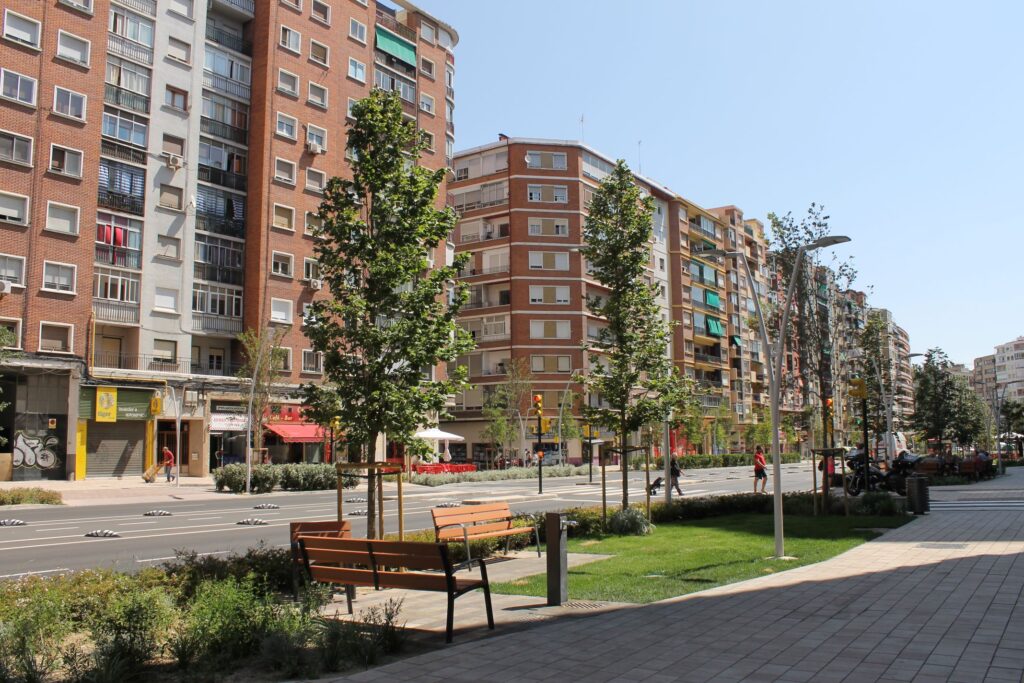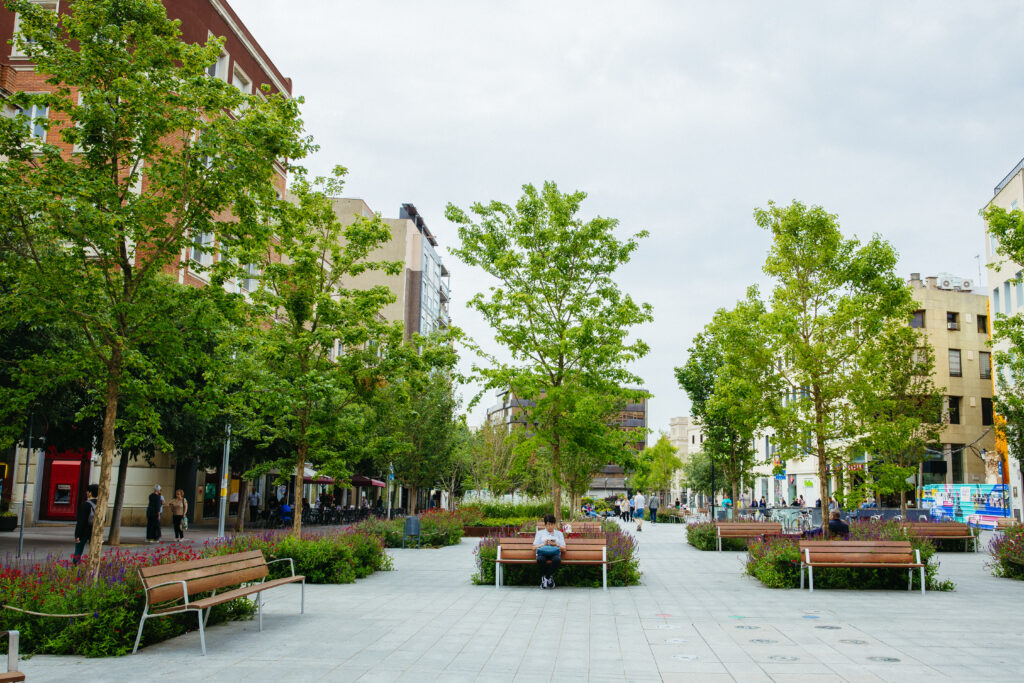East 17th Street
The U.S. 20 Highway corridor in Dubuque, Iowa is the primary east-west route in the city. Future traffic projections indicate that U.S. 20 alone will not provide enough capacity for east-west travel through the city. Capacity along alternate east-west corridors will need to be improved to provide sufficient traffic volume capacity and connectivity between the western growth areas and downtown. The City of Dubuque has analyzed east-west traffic flow and identified corridor improvements and modifications required to support these growing traffic demands. Additionally, consideration was given to transit requirements, pedestrian needs, and sustainability. These ongoing corridor improvements have also improved the storm sewer capacity and provided much-needed revitalization to certain areas of the city. Urban trees have played a large role in this.
Like most U.S. cities, neighborhoods in Dubuque have varying degrees of tree canopy cover – with side streets and suburban areas benefiting from larger numbers of trees, while main streets and downtown cores have noticeably fewer trees.
Like most cities across the U.S. and around the world, neighborhoods in Dubuque have varying degrees of tree canopy cover. Many side streets and suburban areas meet the LEED-ND standard of trees at intervals of no more than 40 feet on 60% of the total block length. However, main streets and downtown core areas are noticeably lacking in street trees.
With the understanding that urban trees encourage exercise, improve air quality, reduce urban heat island effect, improve health, and manage stormwater through evapotranspiration (an important factor in a low-lying river city like Dubuque), the successful establishment and ongoing growth of newly planted trees within the city has been made a priority. It’s this kind of forward-thinking policy that shapes the way to a sustainable urban forest – and with it, all the benefits that healthy trees bestow.
Learn more about the benefits of urban trees in this free eBook:
The Benefits of Urban Trees
Learn more about urban tree planning policy in this free eBook:
Planning for Green Infrastructure
The East 17th Street streetscape improvements in Dubuque embodied this foresight and resulted in over a dozen new trees planted in RootSpace ArborSystem. Contrast to the adjoining West 17th Street with its large specie mature trees, the seven blocks encompassing East 17th Street represented a tree-less and seemingly derelict area in need of revitalization. The City of Dubuque wanted to ensure that the new trees on East 17th Street would eventually grow into large trees like on West 17th Street, in order to continue the mature tree-lined passage for this arterial road.
Through the provision of adequate uncompacted soil volume, appropriate root management, sufficient irrigation and aeration capacity, and unobtrusive tree support – provided by RootSpace ArborSystem – these trees were planted with everything they need to reach their desired mature state.
The design incorporated a 4 foot wide grassy terrace between the sidewalk and street, with a 7 ft x 5 ft section of RootSpace soil cells underneath the sidewalk adjacent to each tree. The intent of the RootSpace is to allow tree roots to comfortably pass under the sidewalk and into turf on the other side of the sidewalk. The design provides well over 500 cubic feet of uncompacted soil per tree.

The renewal of East 17th Street and the continued regeneration and expansion of Dubuque’s East-West Corridor will continue contributing to the improvement of the city’s urban tree planting success and increase in urban tree canopy cover.
Project
Location
Contractor
Landscape Architect
The U.S. 20 Highway corridor in Dubuque, Iowa is the primary east-west route in the city. Future traffic projections indicate that U.S. 20 alone will not provide enough capacity for east-west travel through the city. Capacity along alternate east-west corridors will need to be improved to provide sufficient traffic volume capacity and connectivity between the western growth areas and downtown. The City of Dubuque has analyzed east-west traffic flow and identified corridor improvements and modifications required to support these growing traffic demands. Additionally, consideration was given to transit requirements, pedestrian needs, and sustainability. These ongoing corridor improvements have also improved the storm sewer capacity and provided much-needed revitalization to certain areas of the city. Urban trees have played a large role in this.
Like most U.S. cities, neighborhoods in Dubuque have varying degrees of tree canopy cover – with side streets and suburban areas benefiting from larger numbers of trees, while main streets and downtown cores have noticeably fewer trees.
Like most cities across the U.S. and around the world, neighborhoods in Dubuque have varying degrees of tree canopy cover. Many side streets and suburban areas meet the LEED-ND standard of trees at intervals of no more than 40 feet on 60% of the total block length. However, main streets and downtown core areas are noticeably lacking in street trees.
With the understanding that urban trees encourage exercise, improve air quality, reduce urban heat island effect, improve health, and manage stormwater through evapotranspiration (an important factor in a low-lying river city like Dubuque), the successful establishment and ongoing growth of newly planted trees within the city has been made a priority. It’s this kind of forward-thinking policy that shapes the way to a sustainable urban forest – and with it, all the benefits that healthy trees bestow.
Learn more about the benefits of urban trees in this free eBook:
The Benefits of Urban Trees
Learn more about urban tree planning policy in this free eBook:
Planning for Green Infrastructure
The East 17th Street streetscape improvements in Dubuque embodied this foresight and resulted in over a dozen new trees planted in RootSpace ArborSystem. Contrast to the adjoining West 17th Street with its large specie mature trees, the seven blocks encompassing East 17th Street represented a tree-less and seemingly derelict area in need of revitalization. The City of Dubuque wanted to ensure that the new trees on East 17th Street would eventually grow into large trees like on West 17th Street, in order to continue the mature tree-lined passage for this arterial road.
Through the provision of adequate uncompacted soil volume, appropriate root management, sufficient irrigation and aeration capacity, and unobtrusive tree support – provided by RootSpace ArborSystem – these trees were planted with everything they need to reach their desired mature state.
The design incorporated a 4 foot wide grassy terrace between the sidewalk and street, with a 7 ft x 5 ft section of RootSpace soil cells underneath the sidewalk adjacent to each tree. The intent of the RootSpace is to allow tree roots to comfortably pass under the sidewalk and into turf on the other side of the sidewalk. The design provides well over 500 cubic feet of uncompacted soil per tree.

The renewal of East 17th Street and the continued regeneration and expansion of Dubuque’s East-West Corridor will continue contributing to the improvement of the city’s urban tree planting success and increase in urban tree canopy cover.
Proyecto
Ubicación
Contratista
Paisajista
Project
Location
Contractor
Landscape Architect






